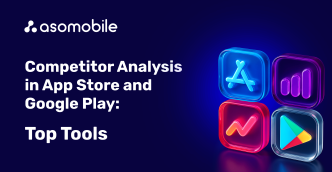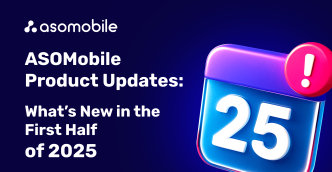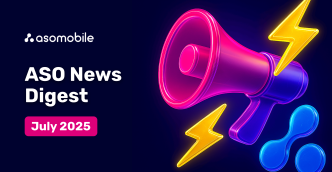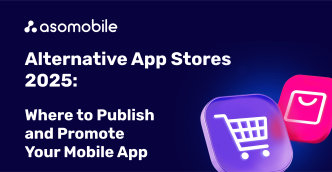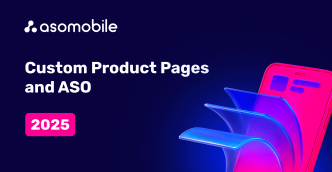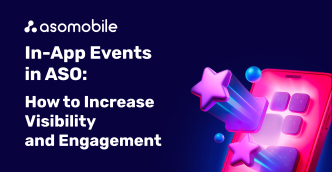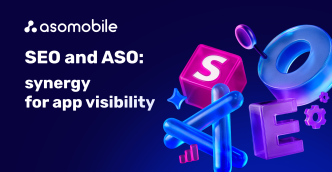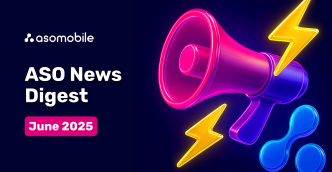In-App Events in ASO: How to Boost Visibility and Engagement
In-App Events is a tool for ASO specialists and developers introduced by Apple back in 2021.
With increasing competition in the App Store, it's becoming harder for developers and marketers to attract and retain user attention. Especially after the pandemic, when the mobile app market exploded, apps were used not just for shopping and communication, but also for virtual concerts, live streams, lectures, and product launches. Quarantine and isolation caused such a spike in app volume that gaining installs became a fierce battle.
To help developers promote these activities, Apple introduced In-App Events — a tool that became part of the ASO arsenal. It allows developers to showcase time-limited events inside apps: from gaming challenges and live streams to movie premieres and new feature rollouts. These events appear in search, app pages, and editorial selections in the App Store, making them especially valuable for increasing organic visibility and engagement.
Let's dive deeper into what IAEs are, what types exist, and how we can use them to boost our app's visibility and conversion.
What Are In-App Events and How Do They Work
As developers and marketers, one of our main goals is not just to acquire users but to retain their attention. Competition is fierce, user interest fades quickly, and push notifications aren't always the best approach. That's where In-App Events come in.
In-app events are a non-intrusive way to remind users about your app right inside the App Store — in search, on the app page, and in editorial collections. The user sees the Event organically, becomes curious, and returns — without pressure or annoying notifications.
A new feature, seasonal Update, contest, or subscription launch? You can present it with a well-designed event card. Add text, an image, or video — and you've got a new engagement opportunity that supports Retention and install growth.
The best part — it's an organic format. Users don't perceive event cards as ads, and the App Store considers them in visibility and ranking.
In-App Events are visual cards shown in the App Store that tell users about the most relevant in-app activities.
In-App Event Metadata
Each card acts like a mini landing page and consists of:
- Event name (up to 30 characters)
- Short description (up to 50 characters)
- Long description (up to 120 characters — expands on tap)
- Image or video — the primary attention-grabber
Where In-App Events Appear
In-App Events aren't just a UI element — they're a visibility tool. Users can see your event card in:
- App Page – all current active events are displayed here
- Search Results – if a user already has your app, they'll see the event card next to the icon and name (instead of screenshots). If not, the standard app listing appears. Users can also search for events directly.
- App Store Editorials – Apple editors highlight events in the Today, Games, and Apps tabs, and in personalized suggestions. With proper formatting, your Event may get free exposure.
This makes In-App Events a powerful way to re-engage former users and attract new ones, at the right time and place.
Users can:
- Open the card and read more
- Tap "Notify" to get a reminder when the Event starts
- Deep link into the app's event section
- Share the Event with friends
All interactions take place inside the App Store.
Why Use In-App Events: 5 Strong Reasons
A simple visual tool with strategic power — that's how you could describe In-App Events. Here's why they work:
Search Visibility Boost
Event card metadata is indexed — an opportunity to target extra keywords. Not just the ones in your app's metadata, but event-specific ones too.
Only the event name and short description are indexed.
Visibility to Existing Users
If a user already has your app, they no longer see screenshots in search. But In-App Events still show — next to the app icon and name — re-igniting interest.
Engagement & Reactivation
A new event offers a soft reason to return: join a challenge, watch a premiere, try a new feature. No pressure — the user decides. This is the key to Retention.
Precise Targeting
Events can be customized by country, language, or user type (new, active, inactive) — one Event, one goal, with no dilution.
Promoting Subscriptions and Features
Unlike traditional ads, event cards are perceived as product elements. Launching a new plan or feature? Make it an event and gain organic interest directly in the store.
How to Create an In-App Event: Step-by-Step
Apple provides dedicated functionality in App Store Connect to create and manage In-App Events. You can save up to 10 drafts and publish up to 5 events simultaneously. The key is to set:
- Event type
- Name
- Descriptions
- Image or video
- Regional availability
Creation and Management: What to Consider
Timing matters. Keep in mind:
- Time zones — match launch time with peak user activity
- Overlap — launch events sequentially to avoid attention clashes
- Analytics — use data to time your Event for maximum impact
Events can be:
- Short-term (a few hours to a couple of days) – urgent announcements, promos, challenges
- Mid-term (several days to a week) – allow return participation
- Long-term (weeks to months) – ideal for seasonal campaigns and major updates
Some content is not allowed:
- Daily repetitive actions
- Generic discounts without new content
- Promotions without a defined event
Choosing the Right Event Type (Badge)
Each In-App Event must be assigned a badge — a label that appears above the title. It helps users understand the context and influences how Apple features your Event.
Available types:
- Challenge – user must complete a task (e.g., run a distance, complete 10 game levels)
- Competition – leaderboard, points, rewards — great for tournaments
- Live Event – real-time activities like matches, streams, or special releases
- Major Update – prominent new feature, redesign, or game mode (not for bug fixes)
- New Season – new story, characters, or themed content (perfect for games)
- Premiere – debut of a film, podcast, song, or episode
- Special Event – doesn't fit other types; collaborations, complex activities, time-limited content
This badge isn't a technicality — it affects ASO. The App Store uses it to categorize and promote your Event.
Metadata Creation: ASO Best Practices
To make your event card effective, optimize it using ASO principles. Focus on:
1. Title & Short Description – Indexed Fields
These appear in search results. Use relevant high-volume keywords.
Example: using "fitness" in the short description can make your card appear for that search query, even to users who've never downloaded your app.
2. Long Description – For Interested Users
Not indexed, but still crucial. Explain timing, mechanics, participation terms, and why it matters now. Write for humans — clarity, emotion, and context help drive action.
3. Creatives: Image & Video – Half the Battle
These are the first things users see.
- Avoid white backgrounds and flashy elements in the lower-left corner (that's where text appears)
- Use auto-looping, seamless video with a custom poster frame
- Preview your card in App Store Connect across devices and languages
Where to Find Inspiration?
Need ideas? Scrolling through the store manually is inefficient. Use the Timeline tool by ASOMobile, now updated to track In-App Events. It shows metadata changes and optimization effectiveness across competitor apps, helping you get the whole picture.
ASO-driven events are not just a formality — they power visibility and engagement. Every word, image, and second of video is a chance to capture users before they decide to install or return.
Measuring the Effectiveness of In-App Events
Once your Event is live, don't just hope for growth — analyze what worked. App Store Connect offers App Analytics to track your event KPIs.
You can set a goal during creation (new user acquisition, re-engagement, Retention). This guides which metrics to focus on.
Key Metrics to Track
New User Acquisition:
- Impressions – how often the card was shown
- New Downloads – installs from new users via the Event
- Day 1 Retention – % who returned the next day
Active User Engagement:
- DAU – daily active usage
- Long-Term Retention – user interest over 7/14/30 days
Reactivation of Churned Users:
- Re-downloads – how many users reinstalled
- Re-engagement – how many became active again
Final Word
Key Takeaways:
- Only the title and short description are indexed
- Events are visible to users who have already installed the app
- You can target by user type and region
- Apple supports event-level analytics in App Store Connect
- Badge type (Challenge, Premiere, etc.) influences placement and perception
In-App Events appear in the most visible parts of the App Store — search, app pages, and editorial collections. They're not just promos — they're strategic ASO tools that boost visibility, reactivate users, and promote new features without traditional ads.
If you approach events with ASO in mind — strong keywords, creative visuals, and clear goals — the results will follow. Add In-App Events to your strategy — it's simple, impactful, and pays off.
 Українська
Українська  Русский
Русский  Español
Español 